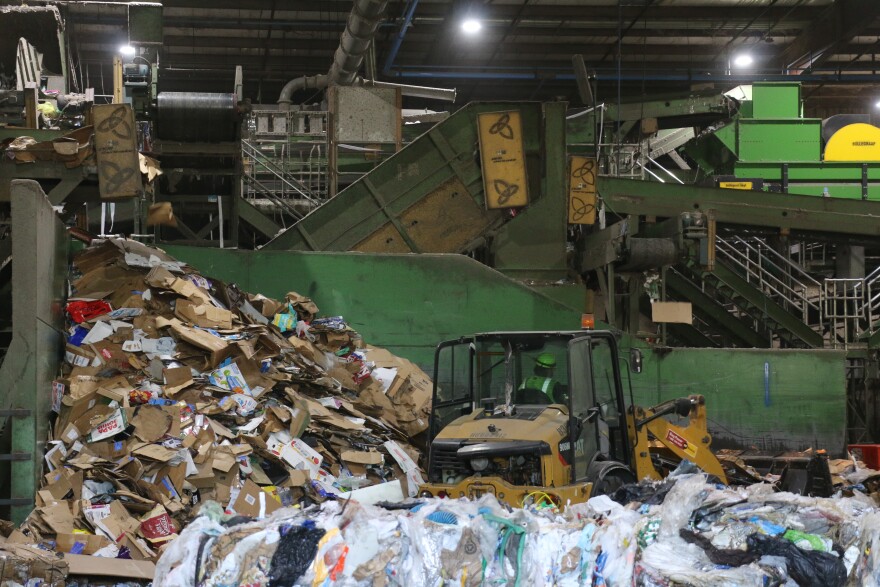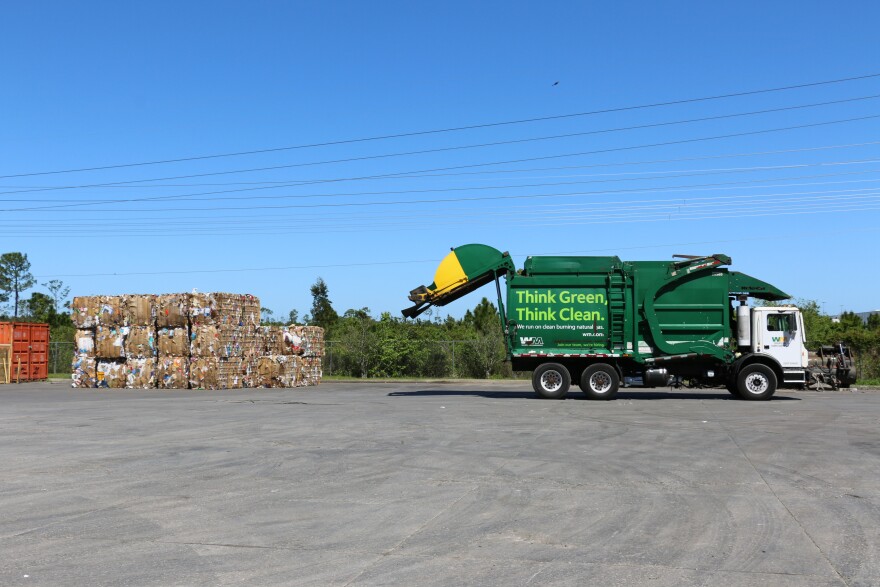Recycling rates in Florida have been declining for the past eight years, according to the Florida Department of Environmental Protection. The Energy, Climate Change and Economic Security Act of 2008 established a statewide, weight-based recycling goal of 75% by 2020. Florida did not meet the 2016 interim goal of 60% and the recycling rate has continued to decline since then.
Many factors contribute to this complex problem in Central Florida. David Gregory, the Solid Waste Division Manager for Orange County, said that consistent rising rates of contamination is the most significant issue. He believes that contamination occurs more often due to a lack of education than negligence.
“People care; they want to recycle, but sometimes there is a lack of understanding,” Gregory said.
Wanting to help, without the knowledge of what can and cannot be recycled, leads many to wishcycling. Gregory said wishcycling is when “people wish that they could recycle something.” Despite good intentions, wishcycling leads to an array of problems in the recycling process.
“I would use as an example, a gold watch. Highly recyclable, highly valuable. "You put it in your recycling bin, those machines aren’t designed to sort it,” Gregory said.

It complicates the sorting process at material recovery facilities (MRFs), as recyclable contamination leads to higher sorting costs and delayed timelines. Items like plastic bags and greasy pizza boxes can disrupt the sorting process, leading to entire facilities being shut down. These long-term delays result in declining recycling rates.
The change from dual-stream to single-stream recycling in Central Florida has also contributed to growing contamination rates. Dual-stream recycling required the separation of recyclables into different bins. Paper and cardboard products in one, plastic in another, so on and so forth. With single-stream recycling, all recyclables are placed in the same bin for curbside pickup. However, this method has caused a higher contamination rate. This is due to the inability to see what is going in their recycling bins, in addition to the low knowledge of what is meant to go in the bins.
To avoid this, recycling facilities aim to help people learn what specific items can be recycled at their locations. For instance, Orange County encourages its residents to “Think 5” by focusing on the top five recyclable items—plastic, metal, and glass containers, as well as cardboard and paper. The overall goal is to help raise awareness about good recycling habits.
Orange County has also enacted a Recycling Quality Improvement Program (RQIP), which inspects recycling bins at households before they are picked up. The bins are given “good job” tags if the materials within are all recyclable and an “oops” tag if not, according to Gregory. Bins that receive an “oops” tag are not collected until the nonrecyclable materials are removed.
“We have tagged almost 230,000 households in Orange County to bring recycling education to the household level,” Gregory said.
Brevard County’s Waste Managment has made efforts within the workplace to utilize recyclable materials.
“Our uniforms are made out of plastic bottles, the uniforms our driver’s wear,” said Amy Boyson, senior manager of Brevard County’s Waste Managment.
One of the most effective recycling rules to remember is, “when in doubt, throw it out,” according to Kevin Smith, Recycling Coordinator for Brevard County’s Solid Waste Management. Including non-recyclable materials in your bin can result in damage to recycling equipment or contamination that can cause entire batches of recycling to be landfilled rather than recycled.

Throwing away items that are not recyclable helps the overall recycling process. However, with some items, simply throwing them away is not enough. Lithium batteries are relatively new and are causing major issues in waste facilities. Many electronic products we use today are powered by lithium batteries, and when they are not disposed of properly, they can cause fires. The National Waste and Recycling Association estimates that more than 5,000 fires occur annually at recycling facilities, and it recently warned that many were likely linked to lithium-ion batteries.
The report added that, depending on severity, the cost of a fire at a MRF can range from a minimum of $2,600 to over $50 million for a catastrophic fire.
“It’s important that we continue to talk about recycling,” Gregory said. “Recycling does happen, material put into your recycling cart does get recycled, and it’s important that we try to keep that as consistent as possible.”

